Neil Armstrong's summary of the world and the city in the 1990s again forms a background against which to consider Freemasonry and the Minerva Lodge:
Last Hurrah of the 20th-Century - The 90’s
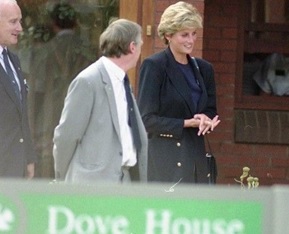 While some were debating whether there would have been room for Jack on that raft after seeing James Cameron’s film ‘Titanic’, locals in Hull had been cheering HRH Princess Diana when she visited Dove House Hospice for its official opening.
While some were debating whether there would have been room for Jack on that raft after seeing James Cameron’s film ‘Titanic’, locals in Hull had been cheering HRH Princess Diana when she visited Dove House Hospice for its official opening.
The 1990s is often remembered as a decade of relative peace and prosperity: The Soviet Union had fallen, ending the decades-long Cold War, Germany witnessed reunification, South Africa's, Nelson Mandela was freed. Lech Walesa became the first President of Poland, and the Hubble Telescope was launched into space. Nearer to home, the Campaign to get rid of the loathed ‘Humberside’ succeeded and the East Riding of Yorkshire was reinstated. A radical new era of communication was on the rise, the Internet. It was even believed that humans might  get to live on Mars, after Nasa’s ‘Pathfinder’ landed a robotic rover on the red planet.
get to live on Mars, after Nasa’s ‘Pathfinder’ landed a robotic rover on the red planet.
The Channel Tunnel opened in 1994. You could now get to France in a train under the sea.
However, the decade was not without violence and tragedy, the Bosnian genocide, the Waco massacre in America and at home, the riots protesting against the Poll Tax. Hull witnessed its share too; the fire at the Royal Station Hotel, (where Kingston Lodge 1010 first held its meetings in 1864); the Hull Prison siege that witnessed Charles Bronson holding a teacher hostage at knifepoint for 43 hours.
With the growth of mobile phones, it was no longer necessary to agree to meet your friends at the Blue Box at the side of Hull Paragon Station before dancing the night away at LA’s, (it had been Hull’s first nightclub to get a 2am licence) then 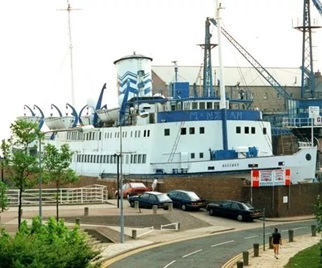 handing over one of those new £2 coins for a burger from the ‘Bun In The Oven’ or going onto the ‘Manxman’, a nightclub on an old ship in Ruscador Dry Dock. A fire in 1997 destroyed much of the interior, and the nightclub closed.
handing over one of those new £2 coins for a burger from the ‘Bun In The Oven’ or going onto the ‘Manxman’, a nightclub on an old ship in Ruscador Dry Dock. A fire in 1997 destroyed much of the interior, and the nightclub closed.
The trawler ‘Arctic Corsair’ had been turned into a museum ship; John Prescott MP opened it to the public. Further up the River, building work started on ‘The Deep.’ In Hull, people were following the Fish Trail,’ forty-one pieces of sculpture, ranging from a tiny anchovy to a 10ft ray, all created by artist Gordon Young. Humorously, an electric eel stood outside an electricity substation with an accompanying shark outside a bank.
The growing power of the Internet would soon end renting from Blockbuster, a VHS video of ‘Home Alone,’ ‘Forrest Gump’ or ‘Jurassic Park.’ It was the decade when expertise, science, the press, and popular culture met. Advances in collecting DNA 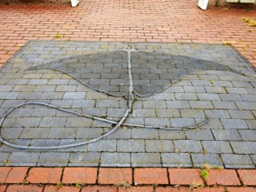 evidence, the rise of celebrity culture, together with an ever more powerful press came under scrutiny.
evidence, the rise of celebrity culture, together with an ever more powerful press came under scrutiny.
A new phenomena, ‘blogging’ appeared. Whereas traditional newspapers had relied on groups of editors and lawyers, the new-fangled internet blogger could just post and be damned. Once the blog was out, it was out, and there would, and still is no comeback. The fallout from this included tirades of unsubstantiated Anti-Freemasonry blogs bursting out into the ether. The age of electronic misinformation had arrived.
Technology had one more killer blow to deliver. The Internet also helped usher in the unseen rise of a world-wide terror network that was destined to burn itself onto humanity’s conscience on the morning of September 11, 2001.
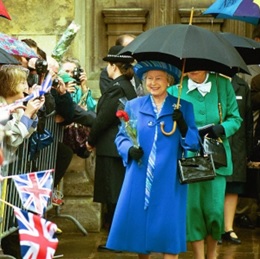 Kingston-Upon-Hull cheered the Queen when she visited the City in 1999 for its 700th anniversary celebrations, the ’90s were coming to a close. A new decade, the Millennium with a fresh set of problems was about to dawn. People were pondering and trying to ignore the doom-mongering of if the Y2K computer bug, commonly referred to as the millennium bug" was going to wreak havoc when dealing with dates beyond 31st December 1999, causing the end of the world.
Kingston-Upon-Hull cheered the Queen when she visited the City in 1999 for its 700th anniversary celebrations, the ’90s were coming to a close. A new decade, the Millennium with a fresh set of problems was about to dawn. People were pondering and trying to ignore the doom-mongering of if the Y2K computer bug, commonly referred to as the millennium bug" was going to wreak havoc when dealing with dates beyond 31st December 1999, causing the end of the world.
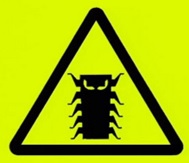
While the more modern style of minute book used from 1983 has not the elegance and heavy authority of earlier tomes, it is constructed with interleaved strips to which dispensations, letters and other communications may be attached, and is thereby useful in collating information which would otherwise be stored elsewhere, or else pasted into the text, thereby spoiling the integrity of the hand-written pages. This practice still continues, however, in the insertion of clippings from the menu cards at installations, which bear the names of the newly invested Officers. (This, for younger Brethren unaccustomed to the ancient practices, was the original meaning of "cut and paste.") Towards the end of the book, (24th June 1995) the Secretary, W Bro Haylett, begins to type the minutes instead of handwriting them, and pastes them into the book, interleaving the summons for the first time. Not all subsequent Secretaries, alas, have been as organised or as conscientious in the inclusion of germane information.
It is nice to read hand-written thank-you letters, such as that sent by W Bro Colonel Ernest Steele, TD, DL, PJGD to the Secretary following the Installation of Bro Philip James Duckwith as Worshipful Master on Saturday 23rd June 1990. (The traditional 24th fell on a Sunday this year, hence the change of date.)

It is evident that a gradual change of attitude is manifesting in the Lodge, and indeed, in Freemasonry generally. Provincial correspondence indicates that following the Tate Report on Membership Issues expresses serious concern in the failure of many Lodges to involve their Brethren in decision making processes. Unofficial Past Masters Committees are deciding policy, which is unconstitutional. Committees may be appointed, of course, but they must report back to Open Lodge. A stern letter from the Provincial Grand Master, Iain Ross Bryce to the Worshipful Masters of all Lodges explains that appointed Officers assist with administrative, ceremonial and charitable work, but under the authority and direction of the WM, who is responsible to the PGM and Grand Lodge, otherwise, he warns, their warrants are at stake. Minerva Lodge took the directive on board.
Another move towards openness appeared in the introduction of "Open Days" wherein members of the public might be invited in to view Lodge Rooms, guided by Freemasons (some even in regalia) to learn that Freemasonry is not a Secret Society with sinister dark practices.
A letter from the Grand Secretary in January 1992 notes a climb-down from the suspicious stance adopted by Derbyshire County Council (who were the first in Britain to ask applicants for jobs if they were Freemasons) citing Section 7 of the Local Government and Housing Act 1989 that states appointments shall be made on merit. It would be a long time, however, before the reputation of the Craft would recover from the publication of Stephen Knight's "The Brotherhood - the Secret World of the Freemasons" (first published 1983.) It was a difficult time, but as far as the Minerva Lodge was concerned, not debilitating. There were still plenty of Candidates, the Lodge still met twice in September, October and November. A letter from UGLE (October 1993) indicated that the Methodist Church was about to review its previously declared opposition to Freemasonry.
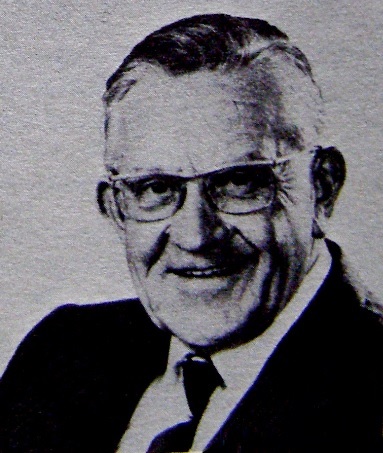 The funds held by the Lodge came under review: in May 1994 "W Bro G Mell . . . explained that due to the complicated nature of the recent Government Laws on Charities, we might well find ourselves in breach of those laws in the future - therefore, on behalf of W Bro A L Barnes, give notice of motion that at the next meeting he would propose that 'The Province of North and East Yorkshire be authorised to administer the Minerva Lodge No. 250 Charity Fund.'" Thia was carried the following month and similar arrangements with the Benevolent Fund were to follow. In July 1994, it was reported that "money loaned by the Minerva Lodge to the Minerva Masonic Hall Association was returned" after negotiation - this was agreed in September, when the Candidate for the Third Degree was absent. In November 1994 (an initiation ceremony) W Bro Kenneth Mark Brown PSGD, Past Assistant Provincial Grand Master, (pictured) had now completed forty years service to Masonry, having been initiated on 10th November 1954. Tributes were paid to him at the Festive Board - "warmly received by the Brethren."
The funds held by the Lodge came under review: in May 1994 "W Bro G Mell . . . explained that due to the complicated nature of the recent Government Laws on Charities, we might well find ourselves in breach of those laws in the future - therefore, on behalf of W Bro A L Barnes, give notice of motion that at the next meeting he would propose that 'The Province of North and East Yorkshire be authorised to administer the Minerva Lodge No. 250 Charity Fund.'" Thia was carried the following month and similar arrangements with the Benevolent Fund were to follow. In July 1994, it was reported that "money loaned by the Minerva Lodge to the Minerva Masonic Hall Association was returned" after negotiation - this was agreed in September, when the Candidate for the Third Degree was absent. In November 1994 (an initiation ceremony) W Bro Kenneth Mark Brown PSGD, Past Assistant Provincial Grand Master, (pictured) had now completed forty years service to Masonry, having been initiated on 10th November 1954. Tributes were paid to him at the Festive Board - "warmly received by the Brethren."
Freemasonry was still getting attacked by the Press, and the Brethren were being cautious. Following recent opportunist thefts, the locks on the building were being changed, new keys issued and various alterations put into place. An obituary by the WM, W Bro E D J Gillard in March 1995 encapsulates some of the changes that had taken place over the years.
OBITUARY
 A few days ago, unnoticed by many of the Brethren of the Minerva Lodge, there passed away one of the quiet, hardest working members of the Lodge, Arthur Walter Mawer.
A few days ago, unnoticed by many of the Brethren of the Minerva Lodge, there passed away one of the quiet, hardest working members of the Lodge, Arthur Walter Mawer.
If you look around the premises of the Lodge I think we have to feel rather proud of the quality of the accommodation we provide. Before the time of the big change caused by the requirements of town planning, we worked and dined on one floor. In order to continue as a Lodge we had to improve in many directions, most particularly as regards fire precautions. The old wooden staircase had to be replaced. This all led to a complete rethink on the whole building and we finished up using the ground floor for the cooking and dining with the old dining room being transformed into a new temple for the Christian degrees.
In this way we were able to cope with all the major requirements of a Masonic Building.
From the very beginnings, and in his own quiet and modest way, Arthur Mawer was a true pillar of the project. His experience in handling cash and stocks and his willingness to do whatever was required soon made him an indispensable member of the management team. In all this, he was assisted by his dear wife, Phyllis who helped in the bar and in many other directions. All the drinks were personally handled by Arthur – a quite hefty physical effort. He kept a check on all the requirements of the other Lodges who used the building, paid the staff their wages and kept them all happy at the same time.
Nothing was too hard or menial for Arthur and Phyllis to do for Minerva.
So, we have lost someone to whom all Lodge members have good reason to be extremely grateful.
Arthur was initiated into Minerva Lodge on 14th October 1959 and was raised to the sublime degree of a Master Mason on 13th January the following year. On 24th June, after a year of Stewardship he was appointed Inner Guard, followed by Senior Warden in 1963. Being a good ritualist, he took an active part in Lodge ceremonies where he always acquitted himself with distinction. On 24th June 1971 he took over the duties of Lodge Treasurer, an office he held for twenty years!
During this time, apart from the normal duties involved in collecting subscriptions and dealing with the Lodge finances and accounts, he was closely involved with the management of the kitchen.
Such duties included the engagement of staff, the paying of wages, the purchase of food and for all drinks consumed at the bar, recording the booking of the premises for private functions and generally supervising the smooth running of the kitchen. All this Arthur did in his usual quiet manner and those of us who have never been involved in such matters cannot fully appreciate the hard work involved and the diligence required to perform these tasks so satisfactorily as Arthur did. To amplify the point further, Arthur and his wife Phyllis regularly served behind the bar for both public and private functions, and, more often than not, returned to the Lodge the following morning to help and restore order and to re-set the tables in readiness for a Lodge function later that day.
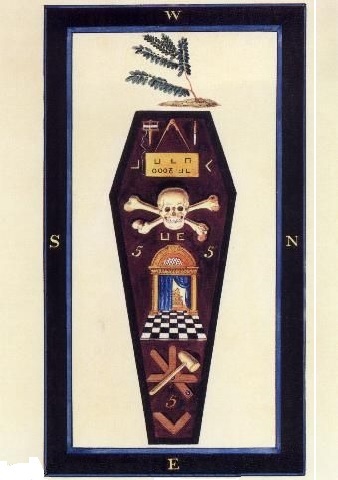 In 1980 Arthur was appointed Provincial Grand Steward in recognition not only of his services to the Lodge, but to Masonry in general, and no award was better deserved.
In 1980 Arthur was appointed Provincial Grand Steward in recognition not only of his services to the Lodge, but to Masonry in general, and no award was better deserved.
Unfortunately due to the worsening of the condition to which he was eventually to succumb, in 1991 he had to relinquish his duties as Treasurer, but despite the many problems and the pain caused by his illness he insisted on attending the Lodge, and this he did until six weeks before his death, when by this time it was impossible for him to leave the house.
He bore the pain and distress of his illness with great courage and fortitude, and even when his suffering was at its extreme he never complained but accepted it all with his natural dignity.
Arthur was a quiet, unassuming and friendly man and a gentleman in every meaning of the word and the Minerva Lodge has lost a true and highly respected Brother. We will all be the poorer for his passing.
May the Great Architect grant him eternal rest.
The Installation of John Pizer marked the move from cursive script to typewritten sheets (24th June 1995) and for the first time the singing of the opening hymn is recorded. I am sure it had been sung on previous occasions, but it had never merited mention until now. While the familiar words "Hail Eternal" are used, the Minerva Lodge is the only one at Dagger Lane to use the tune St Bees, which Is by John Bacchus Dykes, who was born close by in 1823. Dykes (1823 - 1876) named many of his hymn tunes after places in the north of England. The village of St Bees lies in a valley just south of the imposing St Bees Head Cliffs, Cumbria, and takes its name from St Bee (some say St Bega) a seventh century Irish girl of noble lineage who established a nunnery there. Dykes' tune was first published in 1862, by which time the Minerva Lodge was well established.
 In 1995 His Honour Judge Gerald James Kay Coles QC was installed as Provincial Grand Master following the resignation of his predecessor after only four years. His particular contribution to the Province was the restoration of the St William Window in York Minster, forging a link with this medieval building and Freemasonry. The window was painted in c 1414 to commemorate York's saint, William Fitzherbert (Archbishp 1143 - 1154). The stone coffin of the patron saint is in the Western Crypt, and miracles were reported at his tomb from 1177 onwards. It had been in very poor condition , and through the generosity of the Masonic Province of Yorkshire North and East Riding, was restored by York Glaziers Trust between 1997 and 2007, the panels being reinstated in their proper order (some now with Lodge logos) and with external protective glazing. For the
In 1995 His Honour Judge Gerald James Kay Coles QC was installed as Provincial Grand Master following the resignation of his predecessor after only four years. His particular contribution to the Province was the restoration of the St William Window in York Minster, forging a link with this medieval building and Freemasonry. The window was painted in c 1414 to commemorate York's saint, William Fitzherbert (Archbishp 1143 - 1154). The stone coffin of the patron saint is in the Western Crypt, and miracles were reported at his tomb from 1177 onwards. It had been in very poor condition , and through the generosity of the Masonic Province of Yorkshire North and East Riding, was restored by York Glaziers Trust between 1997 and 2007, the panels being reinstated in their proper order (some now with Lodge logos) and with external protective glazing. For the  first time in centuries it was possible to "read" the window as originally envisaged by John Thornton.
first time in centuries it was possible to "read" the window as originally envisaged by John Thornton.
York Minster had been badly damaged by fire in July 1984 when a lightning bolt set alight its south transept, collapsing the roof and causing £2.25m worth of damage but was retuned to its former glory after a multi-million pound restoration project.
1995 saw the publication of "The Hyram Key" which did not meet the approval of Grand Lodge. Since Knight's "The Brotherhood" of 1983 there had been a number of publications about Freemasonry, some of them derogatory and scurrilous.
For the Minerva Lodge there were many ceremonies performed, though the meetings on the fourth Wednesday in September, October and November were discontinued after discussion. Retention was beginning to become a problem though there was not undue worry about this. At a committee Meeting of the Lodges meeting at Dagger Lane it was decided that 110 new chairs were needed for the dining room, the old wooden chairs to be refurbished to go into the Red Room, and the church pews there "to be returned from whence they came." Budgeting was discussed: £10,000 earmarked for the roof to be replaced within a five-year period.
There was a change in procedure following reconstruction work in the kitchen: Lodge Stewards had the resposibility of "serving on" at meals, and clearing away, after which the Stewards themselves would have their meal in the Stewards Room while the rest of the Brethren enjoyed the toasts and speeches in the dining room. While this helped with bonding and the friendly axchange of Masonic knowledge it was not universally popular, especially as the Stewards Room comprised a kitchen preparation area. This room was now renovated, the kitchen floor resurfaced while the dining room parquet floor was repaired and repolished. The idea of the Stewards having a seperate table in the dining room was mooted. The chef handed in her notice. There were also plans to decorate and to improve the heating system in the Red Room, and to increase the bar area downstairs. Outside lets were also to be reviewed.
 In March 1997 a demonstration initiation ceremony took place "due to the delay in foreign parts of the candidate" but there were still plenty of ceremonies during the year. The May Election Night continued the pontifical practice of locking the Lodge from inside and the key being retained by the Worshipful Master until the election process was completed. "After, the Inner Guard unlocked the door . . . the visitors and guests were then admitted," wrote the Secretary in the minutes. Discussions were taking place in Hull regarding the formation of a single Masonic building. This ultimately came to naught.
In March 1997 a demonstration initiation ceremony took place "due to the delay in foreign parts of the candidate" but there were still plenty of ceremonies during the year. The May Election Night continued the pontifical practice of locking the Lodge from inside and the key being retained by the Worshipful Master until the election process was completed. "After, the Inner Guard unlocked the door . . . the visitors and guests were then admitted," wrote the Secretary in the minutes. Discussions were taking place in Hull regarding the formation of a single Masonic building. This ultimately came to naught.
A note appeared in the summons for March 1998 which suggested that standards were slipping and the RWPGM was prepared to take severe measures to stop it: "The Right Worshipful Provincial Grand Master is concerned to learn of an increasing incidence of complaints that Brethren proposing or responding to Masonic Toasts are introducing so-called stories into their material which are unacceptable. THIS PRACTICE MUST CEASE IMMEDIATELY! (This was directed at all Lodges in the Province, but the neccessity of doing so suggests that more than one Lodge was guilty of inappropriate behaviour at the festive board.)
The installation of Chris Brown in 1998 heralded a year of ceremonies but a private in-lodge discussion on the L250's strengths and weaknesses elicited questions about declining membership, suggesting that the quality of some of the candidates was the reason. A new Form P requiring a more rigorous vetting of candidates was now in force - the problem was not merely local, but prolific.
May 1999 saw a banner dedication, with the APGM, W Bro Geoffrey Clarke PSGD in attendance with the Provincial Grand Chaplain W Bro Rt Rvrd Bishop David George Galliford MA and a team of Provincial Officer. The new banner was escorted into the temple with ceremonial dignity and an address given.
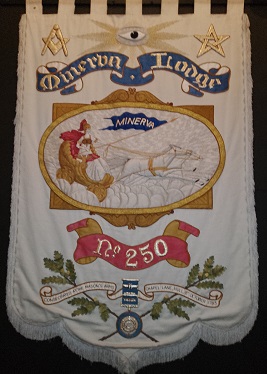 The Minerva banner had made its first public appearance at a procession to Holy Trinity Church on St John the Evangalist's Day, 28th December 1818. It had been expressly made for that occasion by Miss Sarah Crompton, a daughter of the Lodge Secretary.
The Minerva banner had made its first public appearance at a procession to Holy Trinity Church on St John the Evangalist's Day, 28th December 1818. It had been expressly made for that occasion by Miss Sarah Crompton, a daughter of the Lodge Secretary.
This had disappeared some time prior to 1923, and the WM of that year, W Bro J R Ellerby commissioned a copy. Wear and tear rendered this one unusable and its absence at the Provincial Grand Lodge meetings was noted. Mrs Mary Bird, wife of John Bird and an outstanding supporter of the Lodge decided to find a duplicate, and one was made by Mrs Mary Ward who produced the current banner as part of her City and Guilds finals practical project at Bishop Burton College, working from colour photographs. (The Minerva Lodge since provided a silver salver to be awarded annually by the College for outstanding achievement in stitched textiles.)
W Bro Bishop David Galliford spoke of Minerva in classival mythology, coming into existance from the mind of Jupiter fully formed, clad in armour with helmet, breastplate and shield. But rather than regarding her as a goddess of war, he pointed out that she was in the business of promoting peace through encouraging patriotic defence of peoples and places where necessary. Her true spirit, however, was in the preservation of arts and 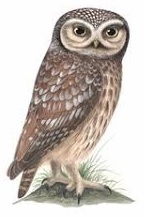 crafts, spinning and weaving, and the cultivation of land and navigation of rivers and waterways. The Provincial Grand Chaplain told the story of her giving the olive tree to mankind to serve the needs of men for ever - indeed, on the banner an olive branch is depicted along with an owl (the symbol of wisdom.)
crafts, spinning and weaving, and the cultivation of land and navigation of rivers and waterways. The Provincial Grand Chaplain told the story of her giving the olive tree to mankind to serve the needs of men for ever - indeed, on the banner an olive branch is depicted along with an owl (the symbol of wisdom.)
He concluded: "Let there be delight in the liberal arts and sciences. Let there be amity, fidelity and friendship among the Brethren. And by the practice of these and the continued blessing of The Great Architect of the Universe, may the work and influence of this Minerva Lodge 250 go forward strongly into the next millennium under its new and splendid banner."
It was rare for the Secretary, Bro K Appleton, to express an opinion in the minutes, but he had not been impressed by the greetings extended by the Assistant Provincial Grand Master, "who went on to admonish the Lodge for not inviting the ladies into the temple to witness the dedication of the banner and delivering a diatribe to the members for not giving more money towards that bloody window." (See above.)
In November 1999 a £400 cheque for the St William Window was tendered from monies raised at recent social events.


